From the Resene decorating blog
Harnessing energy for happiness, contentment and abundance.
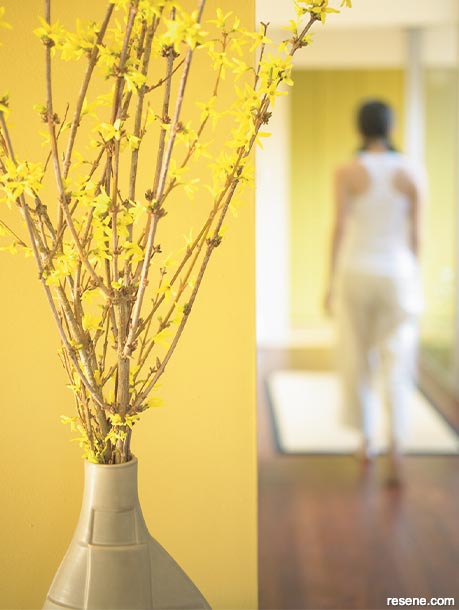
To view more of this project see "Balancing act."
Feng Shui, an art form to some and science to others, has long been used in China to help humans live in harmony with their environment, harnessing the beneficial energies (Ch'i) that surround all of us to maximise opportunities for happiness, abundance and contentment. Ch'i is the energy, the fluid life force that can be found in all living things, created whenever things are done perfectly. Feng Shui provides guidelines to harness this Ch'i energy, as the more Ch'i energy we can attract into our home and work environments, the happier and more contented we will feel and the more likely things will work the way we want them to. Feng Shui will not stop bad things happening to us, but by harnessing energy it will help us accept these challenges, deal with them and then move on.
With a history stemming thousands of years in the Chinese world, Feng Shui has recently become a popular decorating method in the Western world providing guidelines for colour selection, home layouts, furniture placements and much more. This is but a brief introduction to some of the principles of the world of Feng Shui to open your mind to a philosophy of which you may not yet be familiar – for more information visit your local library, search for 'Feng Shui' online or contact the Feng Shui Society of New Zealand who can put you in touch with professional Feng Shui consultants.
Translated, Feng Shui means wind and water – gently flowing meandering water is host to an abundance of Ch'i, stagnant water creates negative Ch'i and fast flowing water will carry Ch'i away from us. Wind can also carry Ch'i away. It is for this reason that mountains are considered important in Feng Shui in land selection as they can help protect the building from harsh winds that will carry the Ch'i away. It is best therefore to seek out gently flowing water and avoid wind to maximise Ch'i. We want to encourage Ch'i to flow slowly through our environment without any obstructions so that we can blend with it and benefit from the opportunities it presents us. Water also symbolises money – therefore it is best for the water to slowly meander past the front of the building where we can grasp the financial opportunities, than behind the building where the water will carry the financial opportunities away from us. In the absence of natural flowing water near the building, building artificial fountains and ponds with gently flowing water can help to attract Ch'i.
Ch'i itself is comprised of two halves – yin (the female half with associations of dark, passive, solid, stagnant) and yang (the male half with associations of light, active, positive). Neither yin nor yang can exist on its own – for balance both need to be present. The opposite to Ch'i energy is Sha, or unwanted, energy. This unwanted energy (often in the form of large single trees in front of windows and doors) must be addressed before undertaking Feng Shui as any positive effects will be negated if negative energy exists. Once Shas are dealt with, the next task is to focus on reducing clutter – clutter creates obstructions and makes it harder for the Ch'i energy to circulate. A clean, tidy, uncluttered space will allow the Ch'i to meander through the environment as it is intended and reduce distractions. Conversely, a noisy, dirty environment would be full of distractions and obstruct the flow of Ch'i.
Implementing Feng Shui is not something you can do on a Sunday afternoon and expect everything to flow smoothly, nor should you aim to completely recreate your environment. Instead, one must allow Feng Shui to slowly flow into one's life to restore balance. Too much energy too quickly and an imbalance will be created. This is often seen with actors who become famous as the result of one movie and cannot handle the pressure of fame – it is because they are not used to the abundance of energy that suddenly surrounds them. The changes put in place should be unobtrusive so that the positive effect of harmony and balance can be felt rather than seen.
Ch'i energy expresses itself differently through the five elements of Chinese astrology – fire, earth, metal, water and wood. Each of the five elements is an integral part of a Cycle of Production and a Cycle of Destruction.
In the Cycle of Production, wood feeds fire, fire burns and leaves earth, the earth is home to metal, metal liquefies to produce water and water nurtures wood.
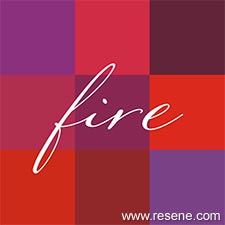
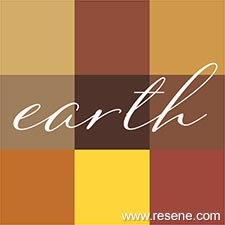
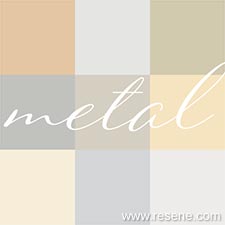
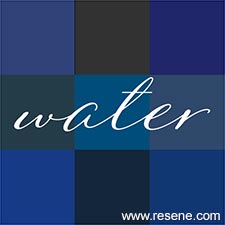
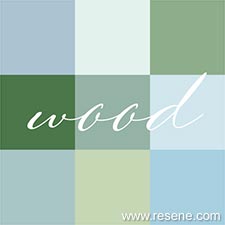
In the Cycle of Destruction, fire melts metal, metal destroys wood, wood takes from the earth, earth overpowers water and water extinguishes fire.
The elements can be used to your advantage when selecting schemes for rooms and exteriors, simply by introducing articles associated with the elements using colour, furniture and accessories to provide balance. For example, to add more of the water element into a room you could introduce black, blue, mirrors, or fluid objects plus anything from the metal element that promotes water such as white or sculptures. Similarly if there is too much of one element, a corresponding element can be employed to provide balance. The balancing element can be determined by studying the Cycle of Destruction and introducing something associated with the element that immediately precedes the element we wish to control.
Thus the Cycle of Production tells us how to enhance an element simply by selecting the element itself and the one that immediately precedes it, while the Cycle of Destruction guides us in how to control an element by introducing the element that immediately precedes the element we wish to control.
The distinctive features of each element are also useful in identifying the nature of the room – whether it be fire, water and so on, enabling one to determine the nature of the room, the room personality and whether one wishes to enhance that element or control it if it is not the desired element for the room. When identifying the predominant element, shapes take precedence over material type, though a complementary pairing of the two – for example, tall rectangular and wood strengthens the presence of the element (in this case wood). If the item were tall and rectangular but made of metal it could still be considered part of the wood element due to its underlying shape, even though it is not actually made of wood. Each element is associated with its own auspicious colour/s and shape (see below) that can be used to help 'charge up' that element by introducing it to the area.
The Resene Total Colour System designates a code to each colour to describe its position in colourspace. Each code is comprised of a letter or letters followed by a three series of digits. The letters at the start of the code tell us the type of colour. For example, a colour with a Resene Total Colour System code of R99-040-002 is an R colour – that is, a colour from the red palette.
Using these codes, one can quickly identify hues to enhance or control specific elements – for example, if you want to add more of the fire element you could select a red from the R palette. The Total Colour System codes for most Resene colours can be found directly under the colour chip on the Resene colour chart or you can visit www.resene.co.nz (NZ) or www.resene.com.au (Aust) to check the code of a specific colour. Woodstains and paving finishes are not coded in this manner. However they can be related back to the codes by fitting them into one of the standard palettes.
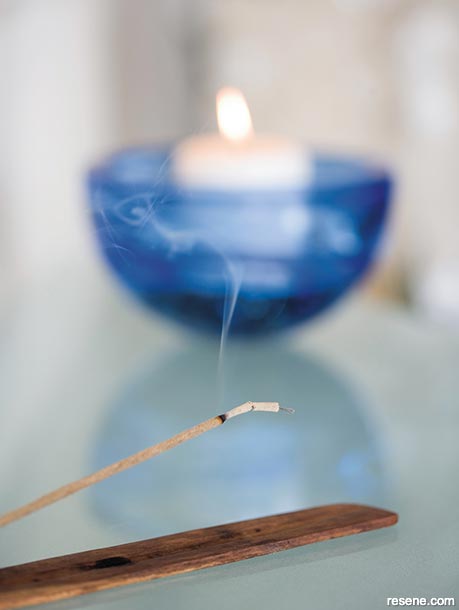
To introduce an element into a room simply select colours, shapes or accessories from the relevant element description above. Remember, only introduce items that you like – if you introduce an item such as a crystal but you yourself dislike crystals it will subconsciously annoy you, creating an imbalance in the environment, which is the opposite of what you are trying to achieve. At all times, your own tastes must dictate the introduction of new materials, items and colours.
The auspicious colour for a house is based on the homeowner's element defined by their date of birth. To maximise the Ch'i you should include the colour of their element and complement this with the colour of the element that immediately precedes it in the Cycle of Production. For example, if the homeowner was from the earth element the primary colours to use would be yellow, brown, terracotta/orange and these would be best complemented with red from the fire element (as fire feeds earth). You may also wish to introduce a colour that has a specific association, such as gold, which is associated with money. Simplified colour associations are below to help you to introduce colours with the specific associations you wish to enhance.
The auspicious colour for a business depends on the nature of the business and the associated element. The auspicious colours for any business can be determined using the following method:
For example, if the business is of a water nature, such as a swimming school or a cleaning business, then the auspicious colours would be black (the colour associated with the water element) and white (the colour associated with metal that generates water in the Cycle of Production). Similarly, if the business is of a fire nature, such as a restaurant, then red (the colour associated with the fire element) and green (the colour associated with wood that feeds fire) would be auspicious colours.
Psychologically colour is powerful and can be used to enhance Ch'i. While many colours have common associations between the Chinese and Western worlds there are some notable departures, such as blue and white. This does not mean that a colour with negative associations to the Chinese can not be used in a positive sense in the Western world, as Feng Shui is about making one's environment balance, not completely recreating it, otherwise one risks creating an environment unsuited to those who must live and work in it.
Black is a powerful colour associated positively with contemplation but negatively with depression. It carries with it associations of money but needs to be used sparingly to avoid a depressive effect. See Resene Nero for a slight off black or use pure black.
Blue is cool and calming but due to its associations as the secondary mourning colour to the Chinese it is seldom used as a primary colour. Conversely, in the Western world, blue is generally perceived as a healing colour and therefore a popular choice when a relaxing environment is desired. See Resene colours with B (blue) in their code makeup or refer to the B palettes of the Multi-Finish collection.
Green symbolises hope, growth and fresh energy, a positive colour for the digestive system that can be cleverly represented by the use of plants in wood or fire element dominated kitchens and dining rooms. A symbol of growth, it is an auspicious colour to include on the stationery and livery of new businesses. See Resene colours with G (green) in their code makeup or refer to the G palettes of the Multi-Finish collection.
Pink represents love, happiness and romance – the ideal colour to use in the master bedroom if more romance is desired. See Resene colours with R (red) in their code makeup or refer to the R palettes of the Multi-Finish collection for a selection of pinks.
Purple, through its perception as simply a deep form of red, is generally grouped with red as an auspicious colour, and like red, a colour to use sparingly. See Resene colours with V (violet) in their code makeup or refer to the V palette of the Multi-Finish collection.
Red is an auspicious Yang colour, associated with celebrations, good luck and an ability to banish negative Ch'i. Best used in small amounts as it can increase aggressiveness and hyperactivity. Ideal for those who are perhaps a little under-aggressive to improve response rates. See Resene colours with R (red) in their code makeup or refer to the R palettes of the Multi-Finish collection.
Yellow denotes power, intelligence and longevity bringing with it wisdom, tolerance and patience. Ideal for areas such as libraries where one wishes to improve one's wisdom and understanding. See Resene colours with Y ( yellow) in their code makeup or refer to the Y palettes of the Multi-Finish collection.
White is perceived by the Chinese to be the major mourning colour, whereas the Western world perceives white to be a celebratory colour, cleansing and pure. Use the Resene Whites & Neutrals chart for near white (Resene Alabaster) and light off-whites or use plain untinted white.
When selecting a site for construction or even a move to an existing dwelling or building, one must consider the land and surrounding elements. Again the five elements assist in this consideration as hills and mountains can be classified into elements according to their shape – for example, a ridge of mountains with gentle undulations up and down is seen to be a fluid shape and therefore associated with water, while mountains that have sharp points would be associated with the triangular shape of the fire element. If the mountains are strongly associated with the water element it would be an auspicious location for someone born under the wood element (as water nurtures wood in the Cycle of Production) but inauspicious for someone born under the fire element (as water extinguishes fire in the Cycle of Destruction).
The best land sites are typically abnormal when compared to their surroundings – that is, if the land is predominantly flat, a raised land site would be considered abnormal and generally auspicious. In contrast, if the land was predominantly mountainous, a flat site would be abnormal and therefore considered auspicious. Of course, sites with good Feng Shui are very limited in supply, so in most cases one must select a less than perfect site and then focus on remedying any weaknesses by introducing elements, such as artificial water features. Ideally the site should at least have mountains to protect your back and gently meandering water flowing along the front.
Once the site has been selected, its Ch'i can be improved through artificial means such as the construction of artificial water areas with gently flowing water and the careful planting of a garden with small trees and flowers. Avoid planting single large trees as they are liable to become Shas (unwanted energy) as they grow to maturity. If single large trees or similar Shas such as power poles already exist, plant a row of small trees or shrubs between the building and the Sha to act as a buffer.
Similarly the placement of the house upon the lot will affect the Ch'i. The house should generally take half to two thirds of the site – much larger and the residents will feel oppressed and lack room to move, much smaller and the wind will have too much room to circulate and carry away the Ch'i.
Balance and harmony is the key. A home that is too large or small for the site or the number of inhabitants will be imbalanced. The building itself and the individual rooms that comprise the whole should be designed keeping Feng Shui principles and the element associated with the homeowner's birthdate in mind to ensure that orientation, configuration and colours are optimal. This same consideration should then be applied to the exterior environment adding artificial features as required to enhance the Ch'i and minimise the effects of any inauspicious elements present in the environment. The final stage is the selection of colours, decorations and furniture layouts room by room to ensure that Ch'i energy can flow freely inside without obstruction.
Specific remedies such as mirrors, crystals and wind chimes can be added into rooms that are lacking in an element. Refer back to the list of elements and their associated shapes and accessories to determine how to 'charge up' a specific element. Mirrors are a popular Feng Shui remedy – generally the bigger the better as they open up our view of life. Used in areas such as dining rooms they double the amount of food available increasing the feeling of abundance. Mirrors are best avoided in bedrooms as the Chinese believe our souls wake at night and are frightened when reflected in a mirror, or where an unwanted view will be reflected. Where mirrors are used, they must be placed so that the tallest person can see their head reflected otherwise headaches will be inflicted upon them. Crystals and wind chimes are also powerful remedies – crystals, most productively placed in the Fame area of the Pa-Kua (see below), attract Ch'i as they enhance the vibrations of an area while wind chimes help slow down the Ch'i if it is racing away too quickly.
Feng Shui helpfully provides specific suggestions on room placements and configurations to demystify building design, such as the need to ensure the front and back door are not aligned with one another for fear the Ch'i drawn into the building will go straight out the back door if the two are aligned. Similarly the front door should open inwards to encourage the Ch'i energy inwards.
Prime positioning in Feng Shui is derived from the Pa-Kua, an octagonal shape that is superimposed over land, buildings, rooms and so on as a directional map to indicate areas suffering imbalance and requiring improvement. The Pa-Kua includes its own colours that can be used to enhance any area within an environment. It is not recommended that one use every colour from the Pa-Kua in every space, but you can select some of the colours if they blend with the room's scheme and the areas that you have identified need improvement.
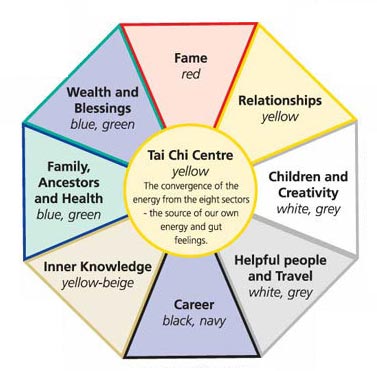
While it may be tempting to focus all enhancements on one sector such as Wealth, balance remains the key. Therefore enhancements need to be made across all areas that are imbalanced – one should not focus purely on one area otherwise one risks making that area even more imbalanced than it may already be.
The Pa-Kua can be applied in either a directional or aspirational manner. The directional method demands that the Pa-Kua be placed according to compass directions, while the aspirational method directs the Pa-Kua to be placed over a plan of the building, room or land so that the side of the Pa-Kua that contains knowledge, careers and mentors is aligned with the wall containing the main entrance. The aspirations are not contained within the shell of the room or building but extend indefinitely in that direction.
If you are interested in learning more about how Feng Shui can improve balance, harmony and energy flows in your life, visit your local library, search for 'Feng Shui' online or contact the Feng Shui Society of New Zealand who can put you in touch with professional Feng Shui consultants.
June 11, 2006
Visit your local Resene ColorShop for expert advice and all the products and accessories you need to make the most of your home.
Book a colour consult | Ask a Colour Expert | Ask a Paint Expert
Resene's decorating blog
Paint your home beautiful! Discover the latest decorating trends, tips and colour news.
![]()
Previous «
Vastu decorating
![]()
Blog home
View the latest trends, tips and news
![]()
» Next
Decorating on a budget